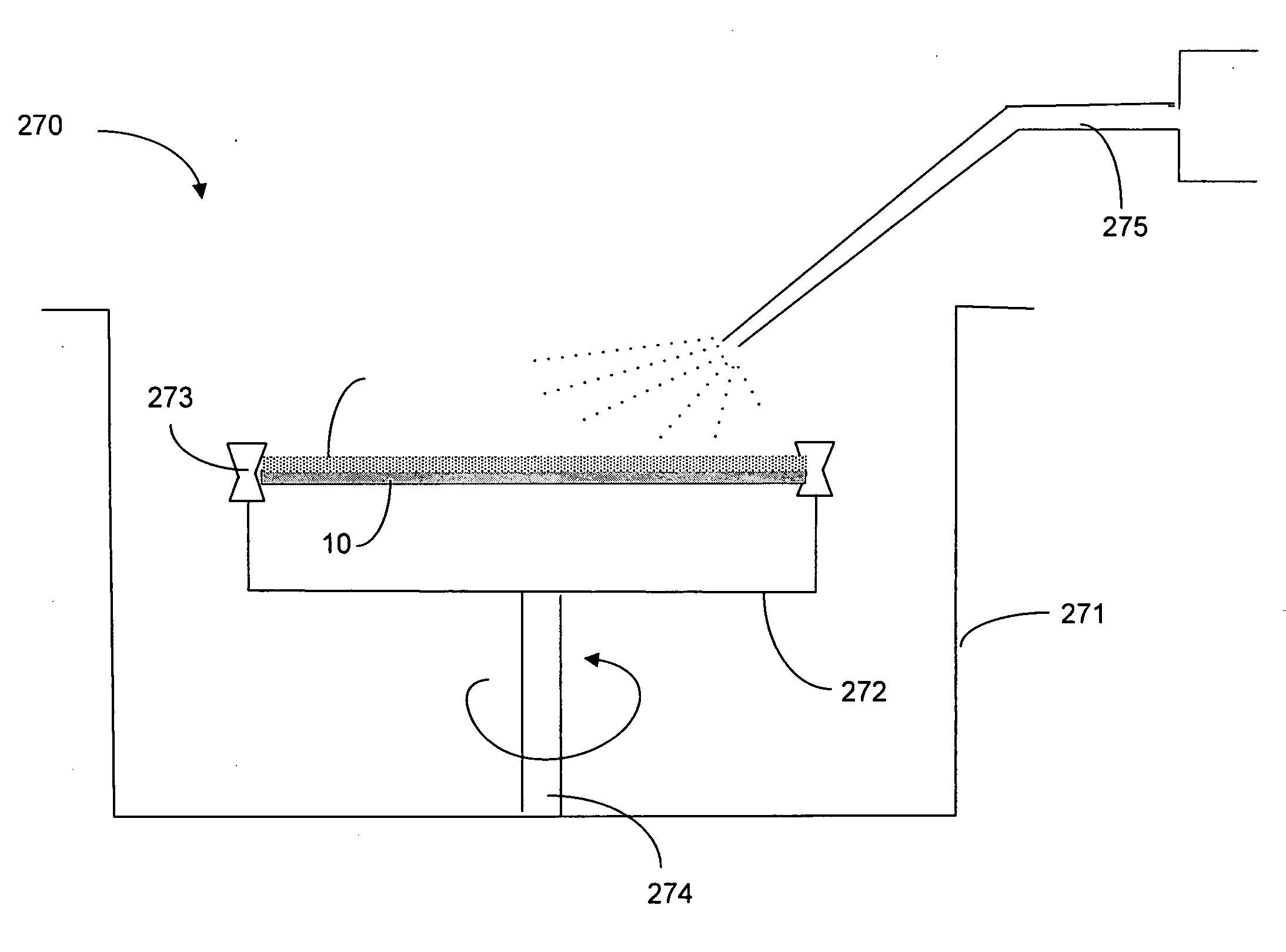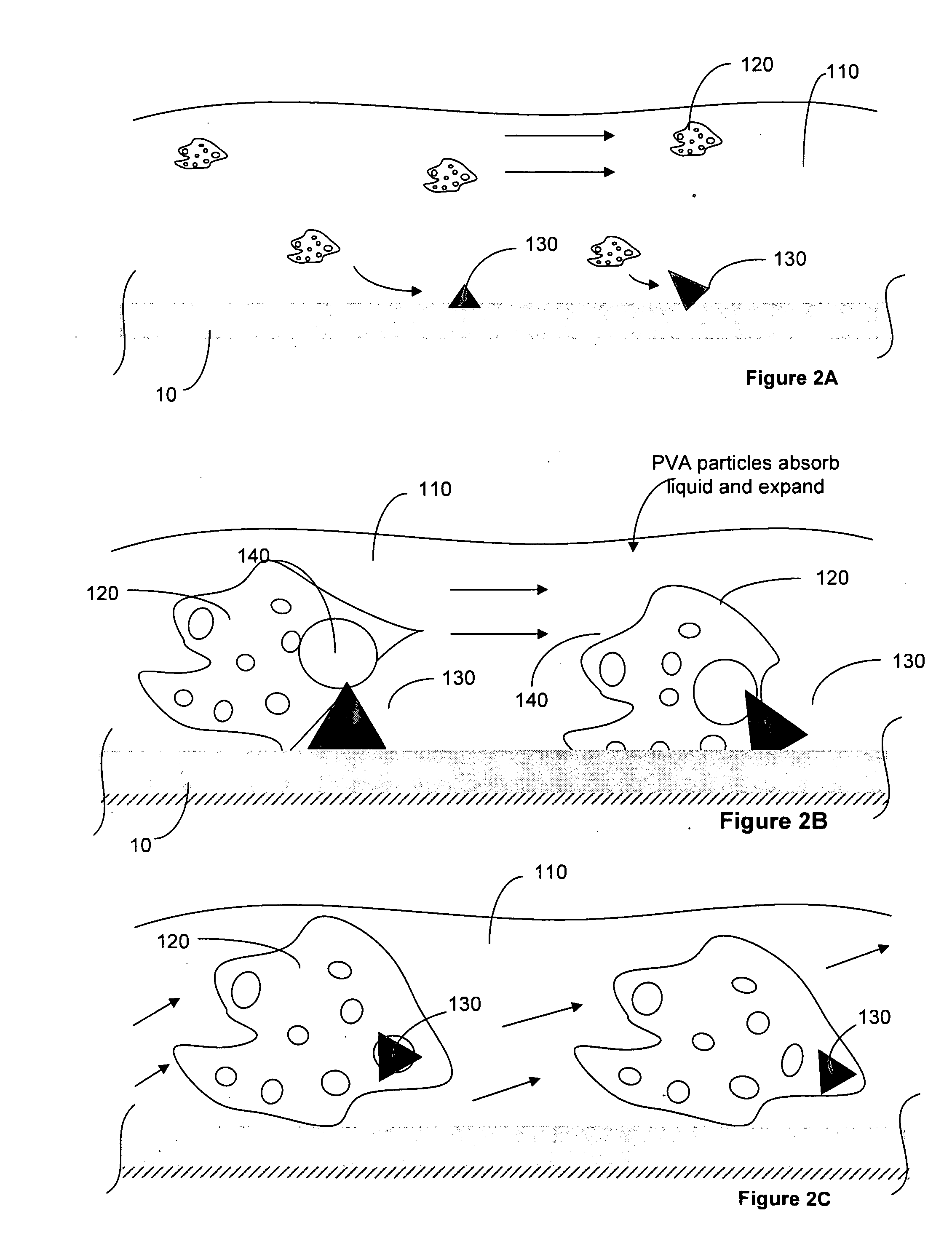Damage-Free High Efficiency Particle Removal Clean
a technology of high efficiency and particle removal, applied in the direction of liquid soap, detergent compounding agent, liquid soap, etc., can solve the problems of significant yield drop, semiconductor device collapse, and difficulty in removing particles from the surface of the substrate without damage, so as to achieve the effect of cleaning the substrate surface and cleaning the substrate surfa
- Summary
- Abstract
- Description
- Claims
- Application Information
AI Technical Summary
Benefits of technology
Problems solved by technology
Method used
Image
Examples
Embodiment Construction
[0023]Several embodiments for efficiently removing contaminants from a surface of a substrate and increasing particle removal efficiency without damage, during a cleaning operation will now be described. It will be obvious, however, to one skilled in the art, that the present invention may be practiced without some or all of these specific details. In other instances, well known process operations have not been described in detail in order not to unnecessarily obscure the present invention.
[0024]Effective removal of contaminants from a surface of a substrate helps in retaining the functionality of the features formed on the substrate surface and of the resulting semiconductor devices. It becomes increasingly more difficult to remove particles for smaller technology nodes without mechanical damage. In one embodiment of the invention, an enhanced cleaning material is used in cleaning the surface of the substrate. The cleaning material includes a cleaning solution made of a polymeric c...
PUM
| Property | Measurement | Unit |
|---|---|---|
| size | aaaaa | aaaaa |
| weight percent | aaaaa | aaaaa |
| weight percent | aaaaa | aaaaa |
Abstract
Description
Claims
Application Information
 Login to View More
Login to View More - R&D
- Intellectual Property
- Life Sciences
- Materials
- Tech Scout
- Unparalleled Data Quality
- Higher Quality Content
- 60% Fewer Hallucinations
Browse by: Latest US Patents, China's latest patents, Technical Efficacy Thesaurus, Application Domain, Technology Topic, Popular Technical Reports.
© 2025 PatSnap. All rights reserved.Legal|Privacy policy|Modern Slavery Act Transparency Statement|Sitemap|About US| Contact US: help@patsnap.com



